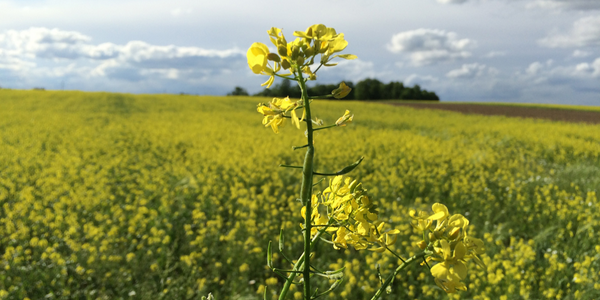The fields are left baron on many American farms during non-harvest seasons, causing a slew of agricultural issues. Natural elements triggering soil erosion, chemical fertilizers flowing into water bodies, etc. These casualties strip the soil of its nutrients and organic matter, hiking the expenses of the farmers which in turn impacts the environment and human health within and outside of the farms. As a means to mitigate such consequences, some farmers use the cover crop technique.
The age-old method of cover crops is praised for enriching the soil with organic matter and protecting and improving the land even during the off-season. If more farmers use this highly underestimated technique, it could assist in resolving a number of issues related to exposed soil and its impact on the environment and human health. A recent research study has further added to the equation of cover crops’ benefits.

Image Source: Rodale Institute
The Soil Water Conservation Society (SWCS) and Truterra LLC (a branch of Land O' Lakes) are conducting a three-year on-farm research study to examine cover crops and their impact on soil health, soil erosion, carbon sequestration, and return on investment. The field-scale investigations are spread across Iowa, Kansas, and Nebraska over 2,400 acres of land. Below are the highlights of the first-year trial findings.
- A net carbon-negative balance on the trial acres.
- A higher GHGs sequestration, approximately three times (on average), as compared to areas without cover crops.
- A 72% reduction of erosion— wind erosion decreased by roughly three quarters and sheet and rill erosion by half.
- The Truterra sustainability score tool which measures on a scale of 0 to 100 (the greater the number, the more sustainable the field) exhibited a boost in the sustainability of an average of 8 points in cover-cropped fields.
Participating farmers and retailers of the trial are using the Truterra sustainability tool to compare the performance of trial acres with cover crops and will continue to analyze the trials for the next two years. They are being scientifically assissted to help analyze the ecological impact and knowledge they need to implement these regenerative techniques for more sustainable farming operations. Farmers are also taking part in studies on nutrient management that span several planting seasons.
According to Tom Ryan, president of Truterra, the findings from this three-year research will give farmers the tools and agronomic support they need to test out cover crops and discover how they might help improve soil health, lessen erosion, and absorb carbon.
Meanwhile, Clare Lindahl, CEO of the Soil and Water Conservation Society, expressed that SWCS is utilizing the concert of relationships to link its widespread network of experts in the commercial and social sectors, showing farmers the both financial and environmental possibilities of undertaking land conservation steps.
The cover crop project is part of the $1.5 million USDA Natural Resources Conservation Service (NRCS) Conservation Innovation Grant On-Farm Trials (CIG-OFT) fund given in 2019 and is carried out in collaboration with Truterra affiliated retailer cooperatives– Alliance Ag and Grain, Frontier Cooperative, and Heartland Cooperative.
Related blog:
Regenerative Agriculture's Benefits to the Farming Community And Beyond
The 5 Key Takeaways of Regenerative Agriculture Landscape Analysis





